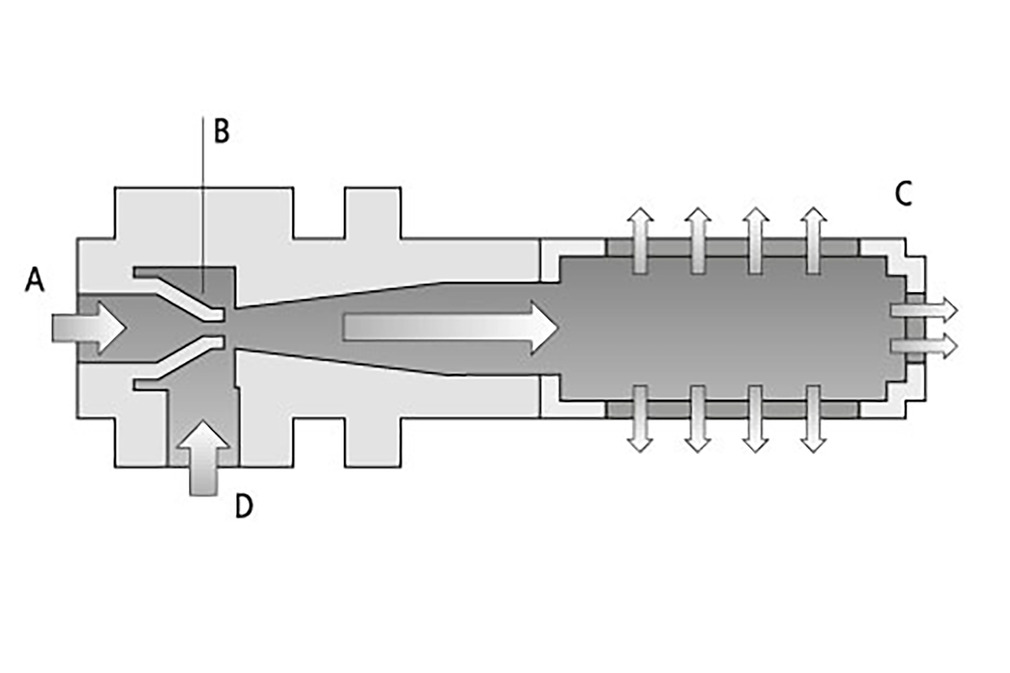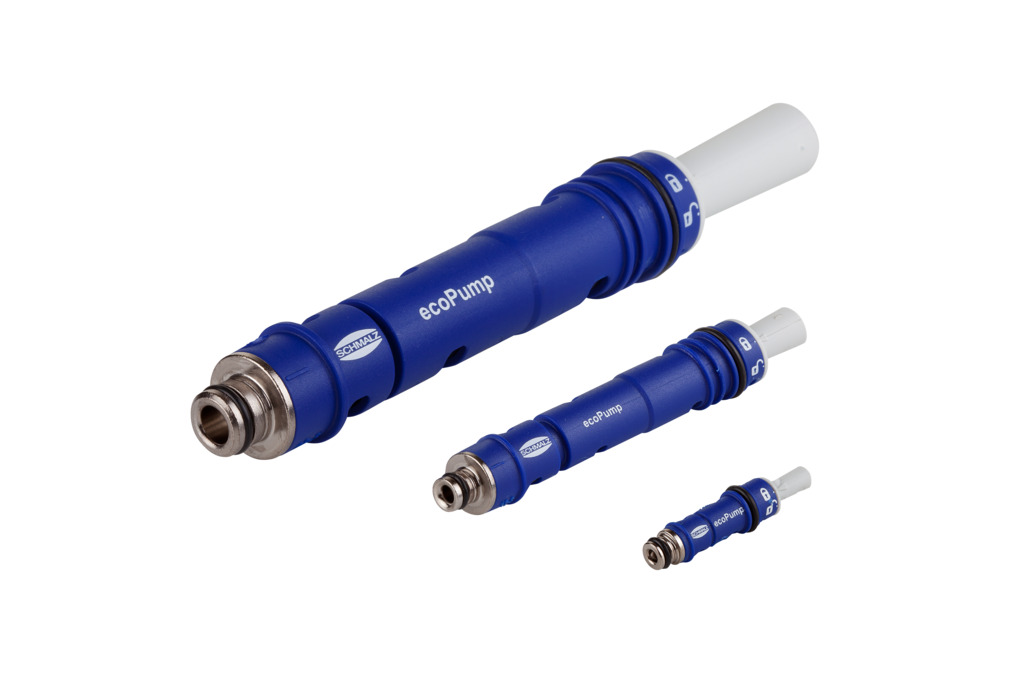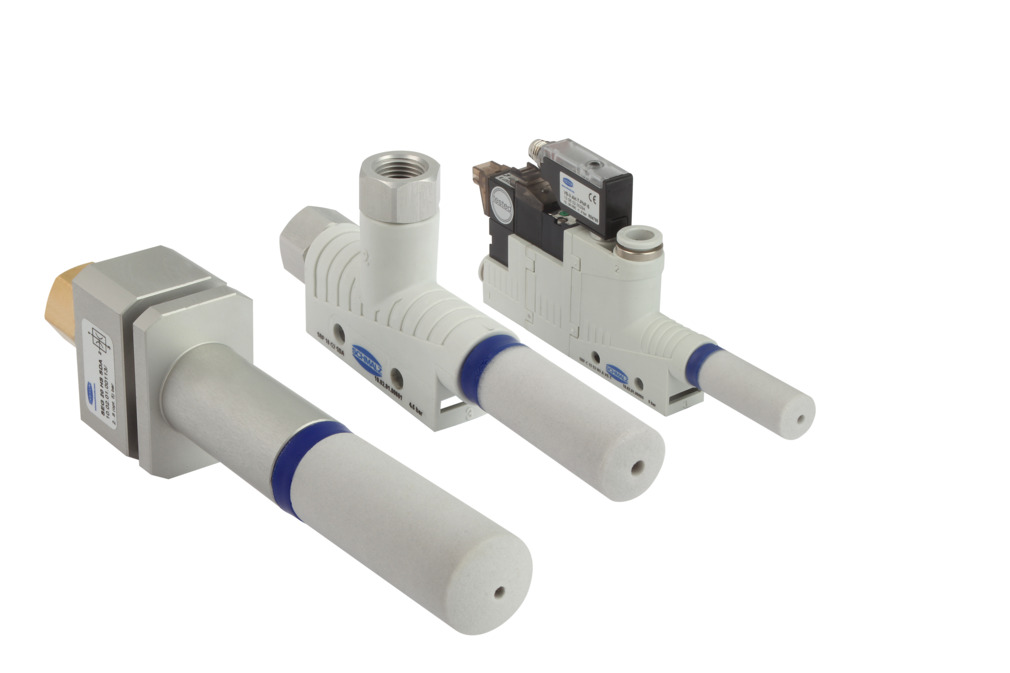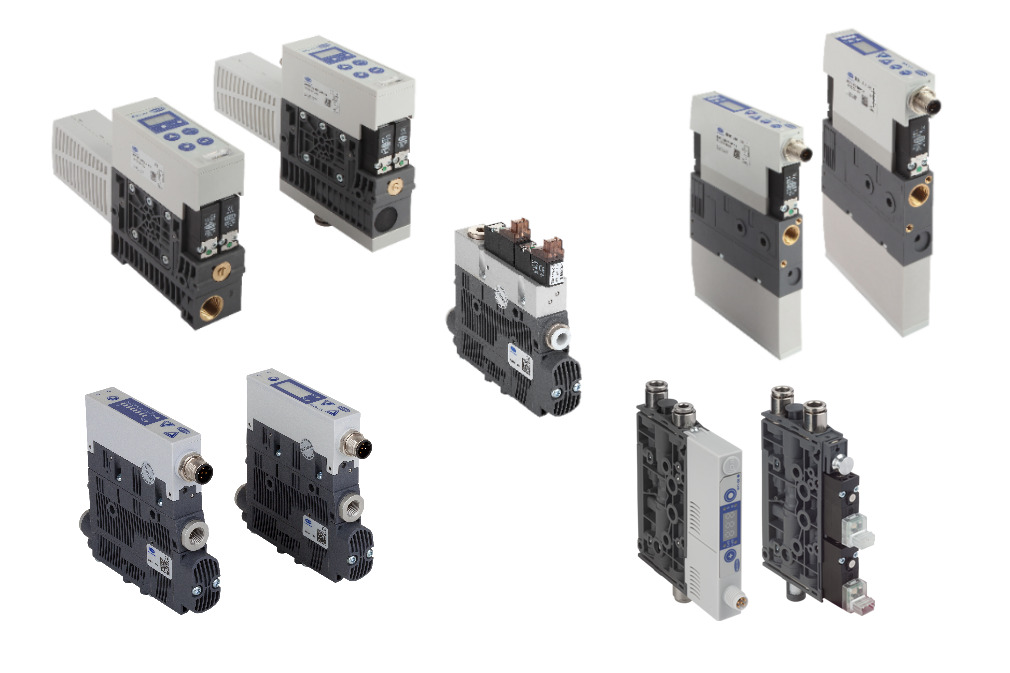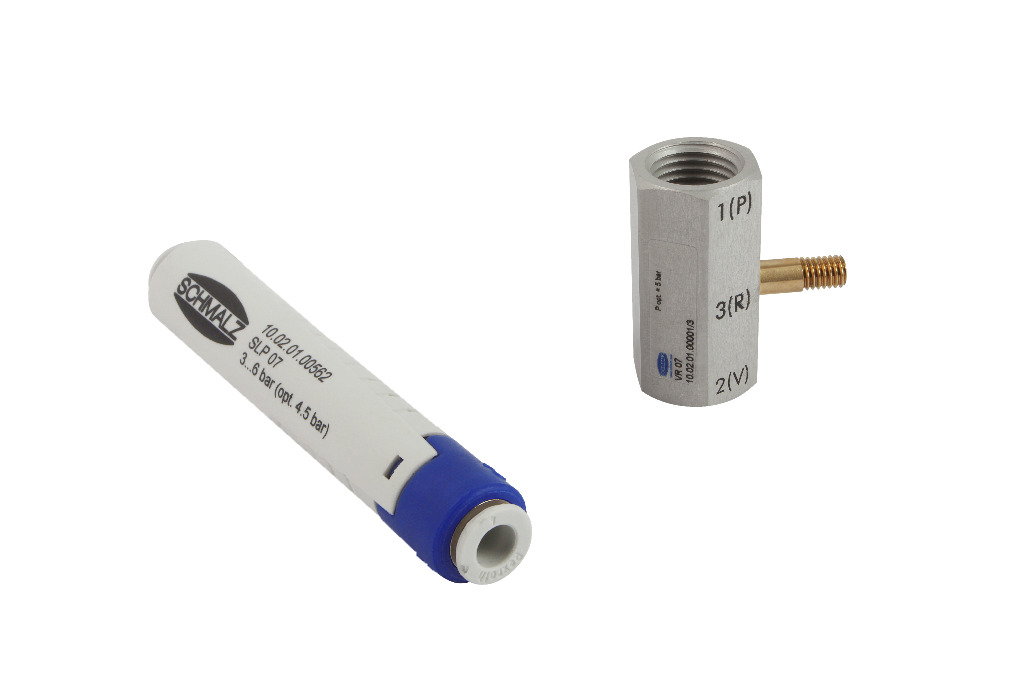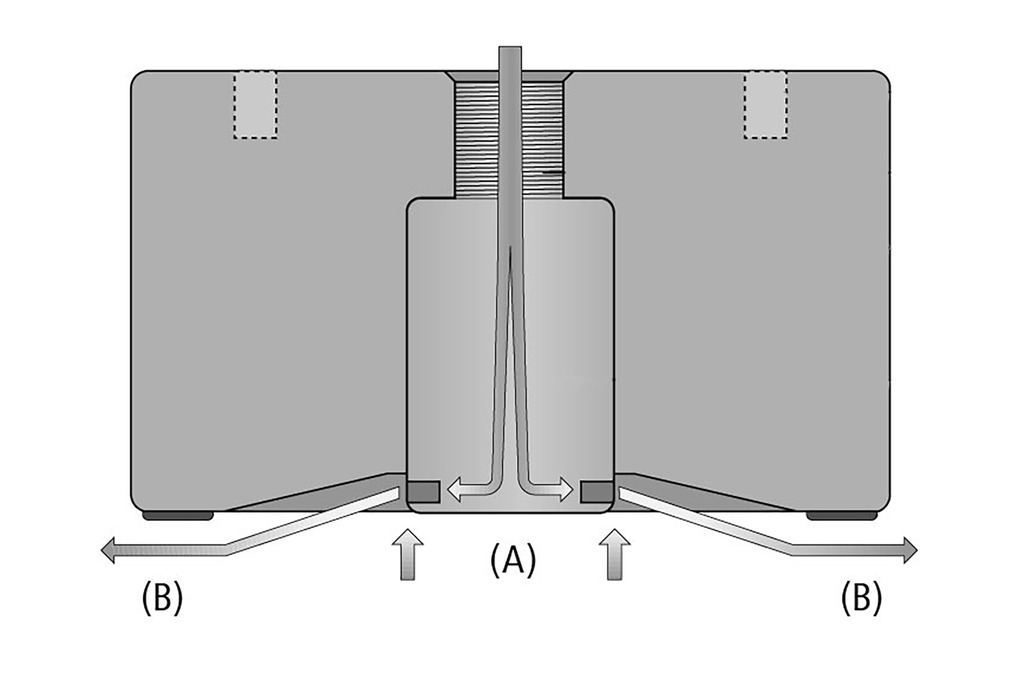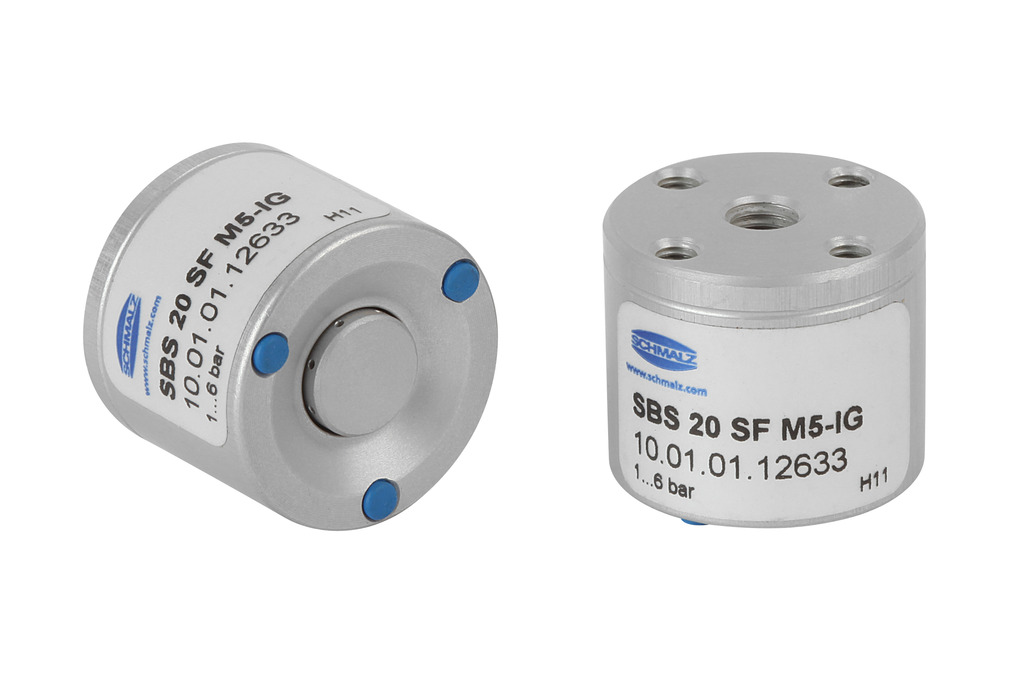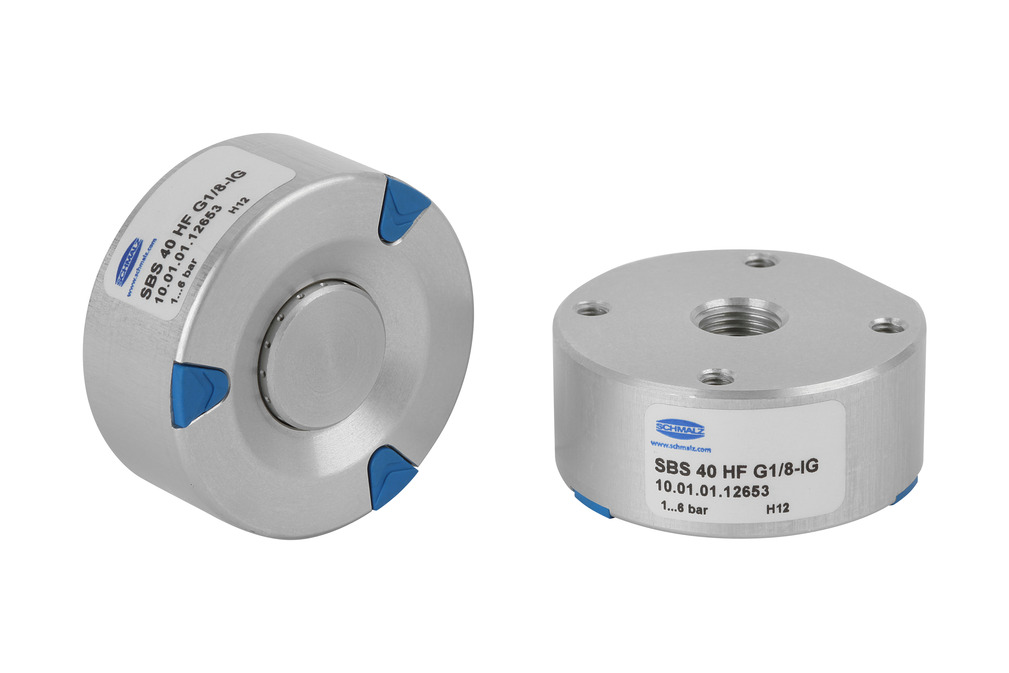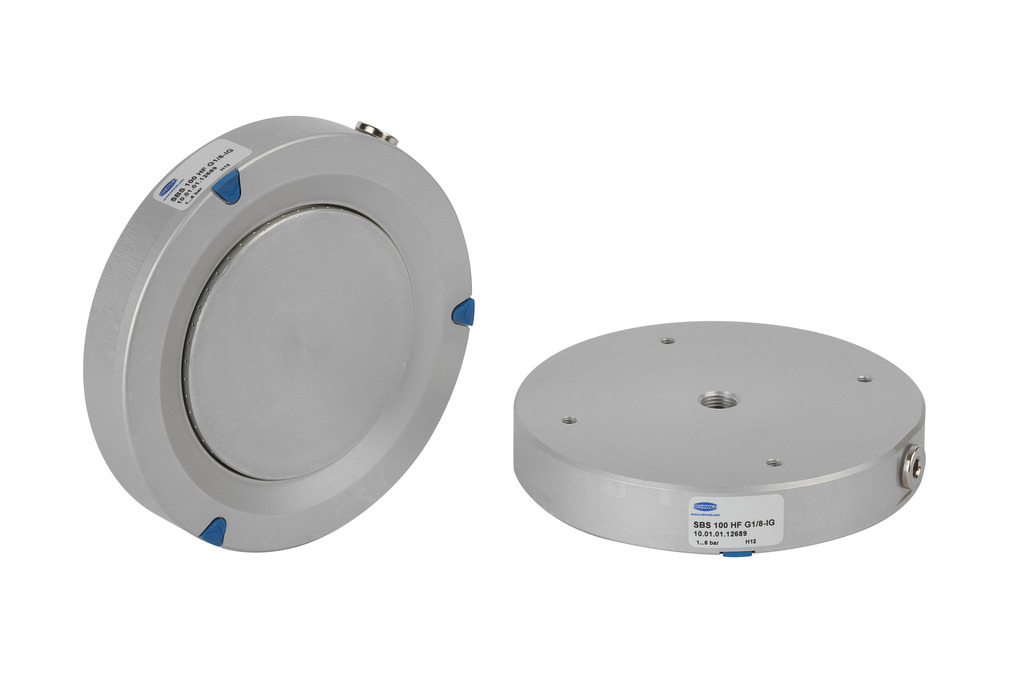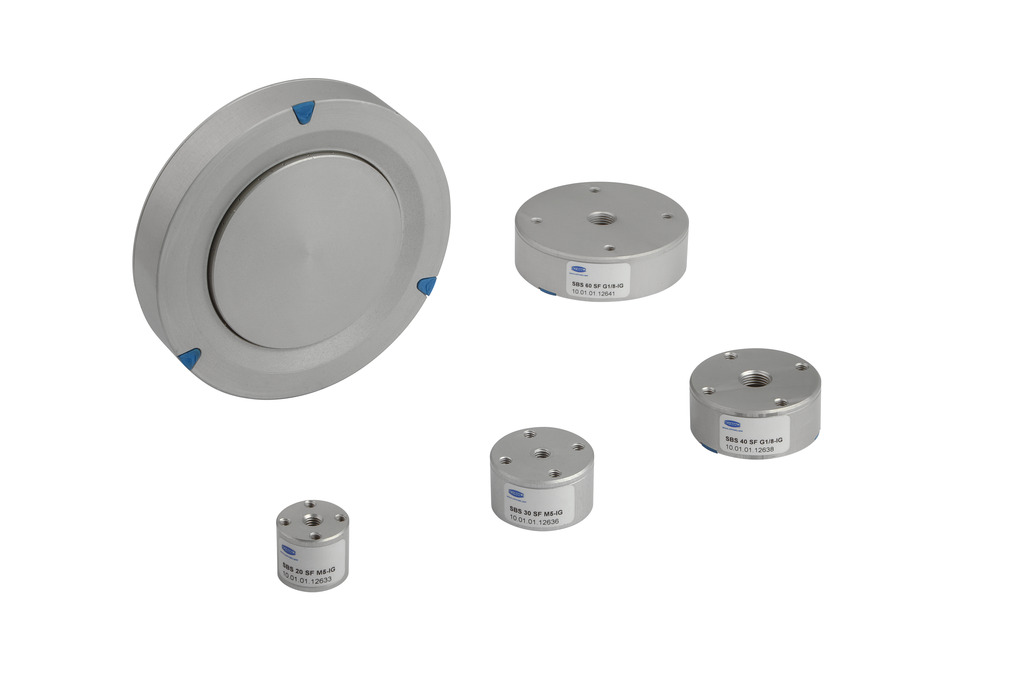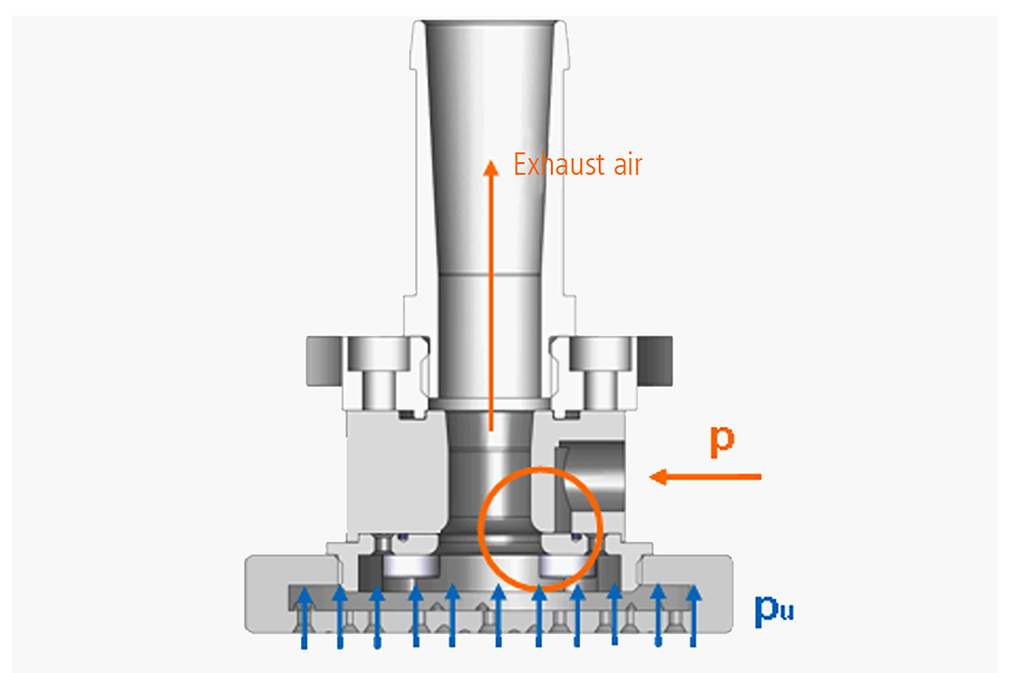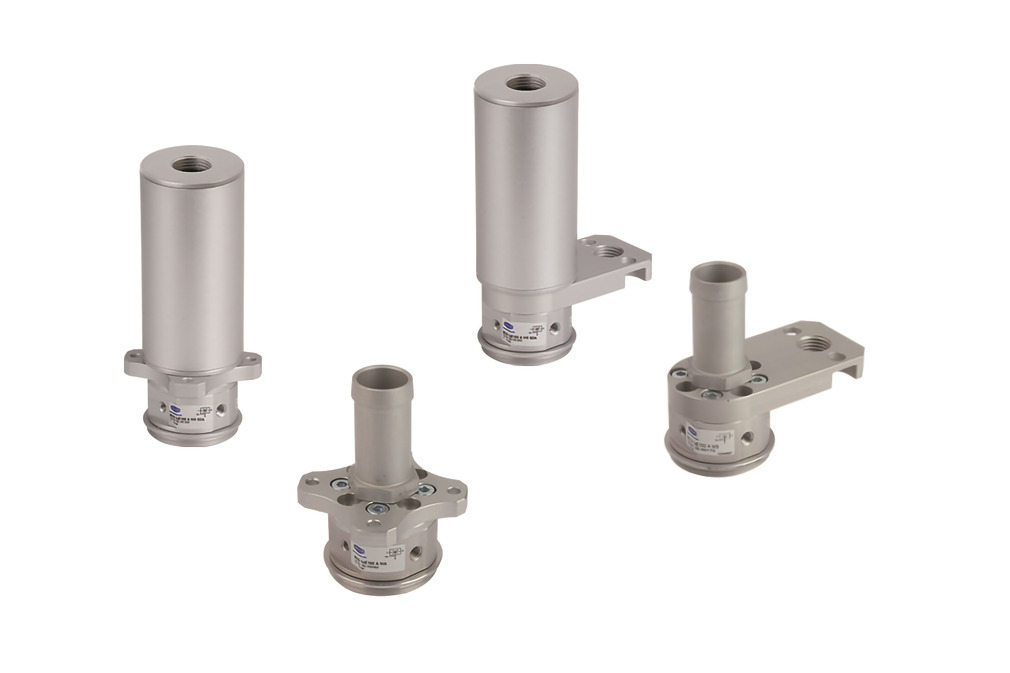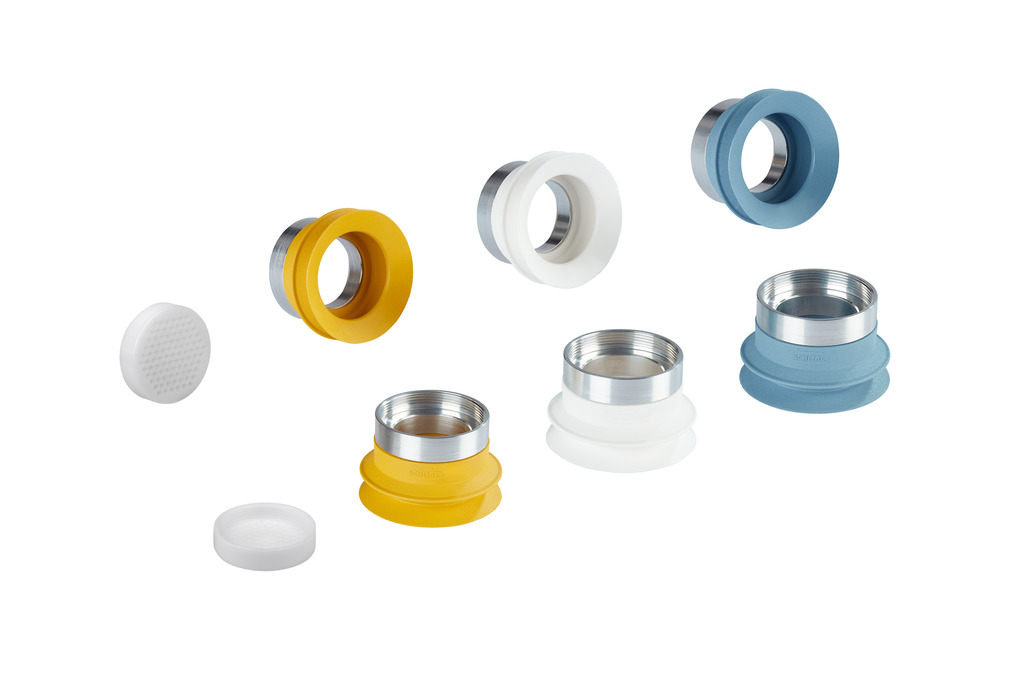Operating principles of vacuum generation
Venturi principle
Operating principle
- Pneumatic vacuum generators function based on the Venturi principle
- Compressed air is introduced into the ejector (A)
- Due to the reduced cross-section of the motive nozzle (the Venturi nozzle [B]), the compressed air is accelerated. The dynamic pressure increases, while the static air pressure simultaneously decreases.
- Once it has passed the motive nozzle, the accelerated air expands and a vacuum is generated
- Air is "sucked" through the vacuum connection (D) into the ejector
- The compressed air escapes from the ejector through the silencer (C) together with the "sucked-in" air.
Advantages
- Vacuum generators that function according to the Venturi principle are especially suitable for very high accelerations
- Vacuum grippers can be controlled individually
- Ejectors in different designs for centralized and decentralized vacuum generation depending on the application
- Various power classes to suit the workpiece and application
Bernoulli's principle
Operating principle
- Pneumatic operation with integrated vacuum generation
- Compressed air escapes through holes in the suction cup and is greatly accelerated when doing so
- Due to the increase in speed, the static pressure falls and a vacuum is produced (A) ("Bernoulli Equation")
- The accelerated air escapes to the side (B); an "air cushion" is produced between the floating suction pad and workpiece
- Leakage is compensated for through a high flow rate, which means that even porous workpieces can be handled and separated
- The Bernoulli effect ensures that the workpieces are handled with minimal contact
- Floating suction cups function according to Bernoulli's principle
Advantages
- Low-contact, gentle handling of thin and sensitive workpieces thanks to the Bernoulli effect
- Safe separation of thin and porous workpieces
The Coanda principle
Operating principle
- Pneumatic operation with integrated vacuum generation
- With the Coanda principle, compressed air is guided through an annular gap which accelerates it
- The increase in the flow speed results in the "Coanda effect" in which the escaping air follows a convex surface
- The air flowing along the surface produces suction ("entrainment") in the ambient air
Advantages
- High suction rate and low air consumption (the required operating pressure is 1 to 5 bar) due to the Coanda effect
- Large contact surface with narrowly positioned vacuum openings prevent the workpiece from being sucked in or damaged
- Suction areas can also be partly engaged
